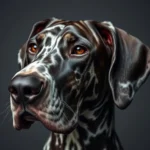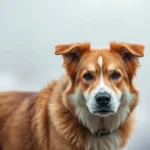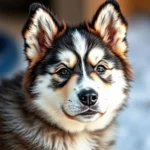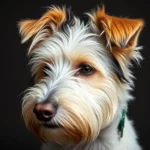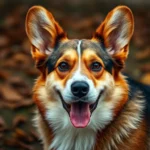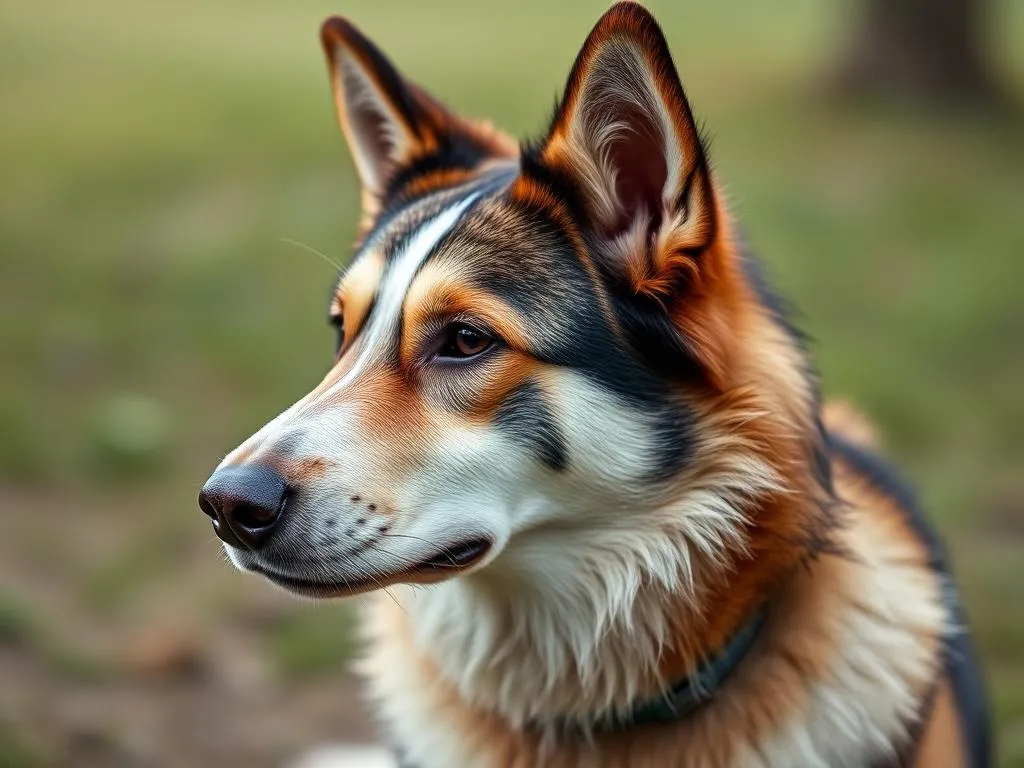
Introduction
Dog breeds are categorized groups of domestic dogs that share specific characteristics, such as physical traits, temperament, and behavior. Understanding these breeds is crucial for potential pet owners, breeders, and enthusiasts, as it helps in selecting the right canine companion that fits one’s lifestyle and preferences. Among the many breeds worldwide, Russian dog breeds stand out due to their unique characteristics, historical significance, and diverse roles in society.
History of Russian Dog Breeds
Cultural Significance
In Russia, dogs have played an essential role throughout history, serving as companions, workers, and protectors. The bond between humans and dogs is deeply rooted in Russian culture, where dogs are often seen as loyal friends and valuable assets. This strong relationship has fostered the development of various dog breeds tailored to specific tasks, from herding livestock to providing security.
Evolution of Breeds
The evolution of Russian dog breeds has been significantly influenced by the country’s vast geography and diverse climates. The harsh winters and rugged terrains of Siberia, for instance, led to the development of breeds that could withstand extreme conditions. As a result, many Russian dogs exhibit traits suited for endurance, resilience, and adaptability.
Historical Uses
Historically, Russian dog breeds have served various purposes. Some were bred for herding and guarding livestock, while others were developed for hunting and companionship. For example, the Siberian Husky was initially used by the Chukchi people for sled pulling and as a source of warmth and companionship. Similarly, the Borzoi was bred for hunting large game, showcasing the versatility and functional nature of Russian dog breeds.
Popular Russian Dog Breeds
Siberian Husky
The Siberian Husky is perhaps one of the most recognized Russian dog breeds worldwide. Known for their striking appearance, Huskies have a medium build with a thick double coat that can come in various colors, including black, gray, and red. Their captivating blue or multi-colored eyes add to their allure.
Temperament: Siberian Huskies are known for their outgoing and friendly personalities. They are energetic, intelligent, and highly social, making them suitable for families who can provide ample exercise and companionship.
Care Requirements: Grooming is essential, particularly during shedding seasons. Regular brushing helps manage their thick coat. Huskies require substantial exercise, ideally at least an hour of vigorous activity daily. Health issues to watch for include hip dysplasia and eye problems.
Russian Blue Terrier
The Russian Blue Terrier, also known as the Black Terrier, is a breed that boasts a distinctive appearance. They are medium to large in size, with a dense, curly coat that is often black or gray.
Behavioral Traits: This breed is known for its intelligence and loyalty. They are protective of their families and require consistent training and socialization from an early age to thrive. Their energetic nature means they need regular exercise to stay happy and healthy.
Borzoi
The Borzoi has a rich history that dates back to the Russian aristocracy. Originally bred for hunting wolves and other large game, Borzois are elegant and graceful dogs with a long, narrow head and a silky coat.
Physical Characteristics: They are tall and slender, with males typically standing between 28 to 32 inches at the shoulder. Their unique coat can be a variety of colors, including white, fawn, and black.
Personality: Borzois are known for their gentle and calm demeanor, making them wonderful companions. They can be aloof with strangers but are affectionate and loyal with their families.
Caucasian Shepherd Dog
The Caucasian Shepherd Dog, also known as the Caucasian Ovcharka, is a powerful and imposing breed originally used for guarding livestock. Their large size and thick double coat make them well-suited for their role in harsh climates.
Physical Traits: These dogs typically weigh between 100 to 220 pounds and have a broad head with strong jaws. Their coat varies in length and can be a mix of colors, including gray, brindle, and fawn.
Guarding Instincts: Known for their protective nature, Caucasian Shepherds are highly devoted to their families. They require firm training and socialization to ensure they are well-adjusted and manageable.
Samoyed
The Samoyed is a friendly and affectionate breed known for its distinctive white coat and “Sammy smile.” Originally bred by the Samoyede people for herding reindeer and pulling sleds, they are highly social and thrive on human interaction.
Origin: This breed has a long history, with roots tracing back to Siberia, where they played a vital role in the lives of nomadic tribes.
Physical Features: Samoyeds are medium to large dogs with a thick, fluffy coat that requires regular grooming to prevent matting. Their friendly demeanor makes them great family pets, as they are known to be excellent with children.
Behavioral Traits: Samoyeds are playful and energetic, requiring regular exercise and mental stimulation. Their affectionate nature makes them great companions, but they can be prone to separation anxiety if left alone for long periods.
Characteristics of Russian Dog Breeds
Physical Traits
Many Russian dog breeds share common physical characteristics, including a robust build, thick fur, and resilience to cold temperatures. Their coats can vary widely, from the long, silky fur of the Borzoi to the dense, curly coat of the Russian Blue Terrier. This diversity in coat types is a reflection of their adaptation to various climatic conditions.
Temperament
Generally, Russian dog breeds exhibit strong loyalty and protective instincts. They are often intelligent and trainable but can also display independent streaks. Many of these breeds thrive in family environments, where they can engage with their human companions and participate in activities.
Intelligence and Trainability
Most Russian dog breeds are known for their intelligence, which can make training both rewarding and challenging. Breeds like the Siberian Husky and Russian Blue Terrier often require consistent training methods to channel their energy and intellect effectively. Early socialization and training are crucial in shaping well-rounded dogs.
Care and Maintenance for Russian Dog Breeds
Grooming Needs
Grooming requirements vary among Russian dog breeds. For instance, Siberian Huskies and Samoyeds require regular brushing to manage their thick double coats, particularly during shedding seasons. In contrast, the Borzoi’s silky fur may require less frequent grooming but still benefits from regular brushing to prevent tangles.
Exercise Requirements
Exercise is a critical component of care for Russian dog breeds. Most of these breeds are energetic and require daily physical activity to stay healthy and happy. Activities such as running, hiking, or playing fetch are excellent ways to keep them engaged. For example, Siberian Huskies thrive on long, vigorous walks and playtime, while Caucasian Shepherds enjoy outdoor activities that allow them to explore their environment.
Health Considerations
While Russian dog breeds are generally healthy, they can be prone to specific health issues. For instance, Siberian Huskies may experience hip dysplasia, while Borzois can be susceptible to bloat. Regular veterinary check-ups, vaccinations, and a well-balanced diet are essential for maintaining their health.
Training Russian Dog Breeds
Basic Training Techniques
Training Russian dog breeds requires patience and consistency. Positive reinforcement methods, such as treats and praise, are effective in encouraging desired behaviors. Basic commands like sit, stay, and come should be taught early, as these breeds often benefit from having structure and boundaries.
Socialization
Early socialization is crucial for Russian dog breeds, as it helps prevent behavioral issues and ensures they are well-adjusted. Introducing them to various environments, people, and other animals can help them develop confidence and reduce anxiety.
Behavioral Challenges
While many Russian dog breeds are intelligent, they can also exhibit stubbornness. This may lead to challenges during training. Understanding each breed’s unique traits and employing tailored training methods can help address these issues effectively.
Adopting a Russian Dog Breed
Where to Find Them
When considering adoption, it’s essential to find reputable breeders or rescue organizations specializing in Russian dog breeds. Ethical breeders prioritize the health and well-being of their dogs, providing necessary health clearances and guidance.
Considerations Before Adoption
Before adopting a Russian dog breed, potential owners should assess their lifestyle to determine compatibility. Consider factors such as activity level, living space, and time commitment, as these breeds often require significant engagement and exercise. Additionally, it’s crucial to understand the financial commitment associated with dog ownership, including food, grooming, veterinary care, and training expenses.
Conclusion
Understanding Russian dog breeds is vital for anyone considering bringing one of these magnificent dogs into their home. Each breed offers unique qualities and characteristics that can enrich the lives of their owners. Whether you’re drawn to the energetic Siberian Husky, the elegant Borzoi, or the protective Caucasian Shepherd, it’s essential to research and appreciate the history and needs of these breeds.
Dogs provide unparalleled companionship and joy, and knowing more about Russian dog breeds can help you make an informed decision, ensuring that you find the perfect match for your family and lifestyle.
FAQs
What are some common traits of Russian dog breeds?
Most Russian dog breeds are known for their loyalty, intelligence, and adaptability. They often have thick coats suited for colder climates and require regular exercise.
Are Russian dog breeds good family pets?
Yes, many Russian dog breeds are great with families. Breeds like the Samoyed and Siberian Husky are known for their affectionate nature and compatibility with children.
How much exercise do Russian dog breeds need?
Exercise needs vary by breed, but most require substantial physical activity daily. Breeds like the Siberian Husky and Caucasian Shepherd benefit from vigorous play and outdoor activities.
What health issues are common in Russian dog breeds?
Some common health issues include hip dysplasia in Siberian Huskies and bloat in Borzois. Regular veterinary check-ups are essential to monitor their health.
